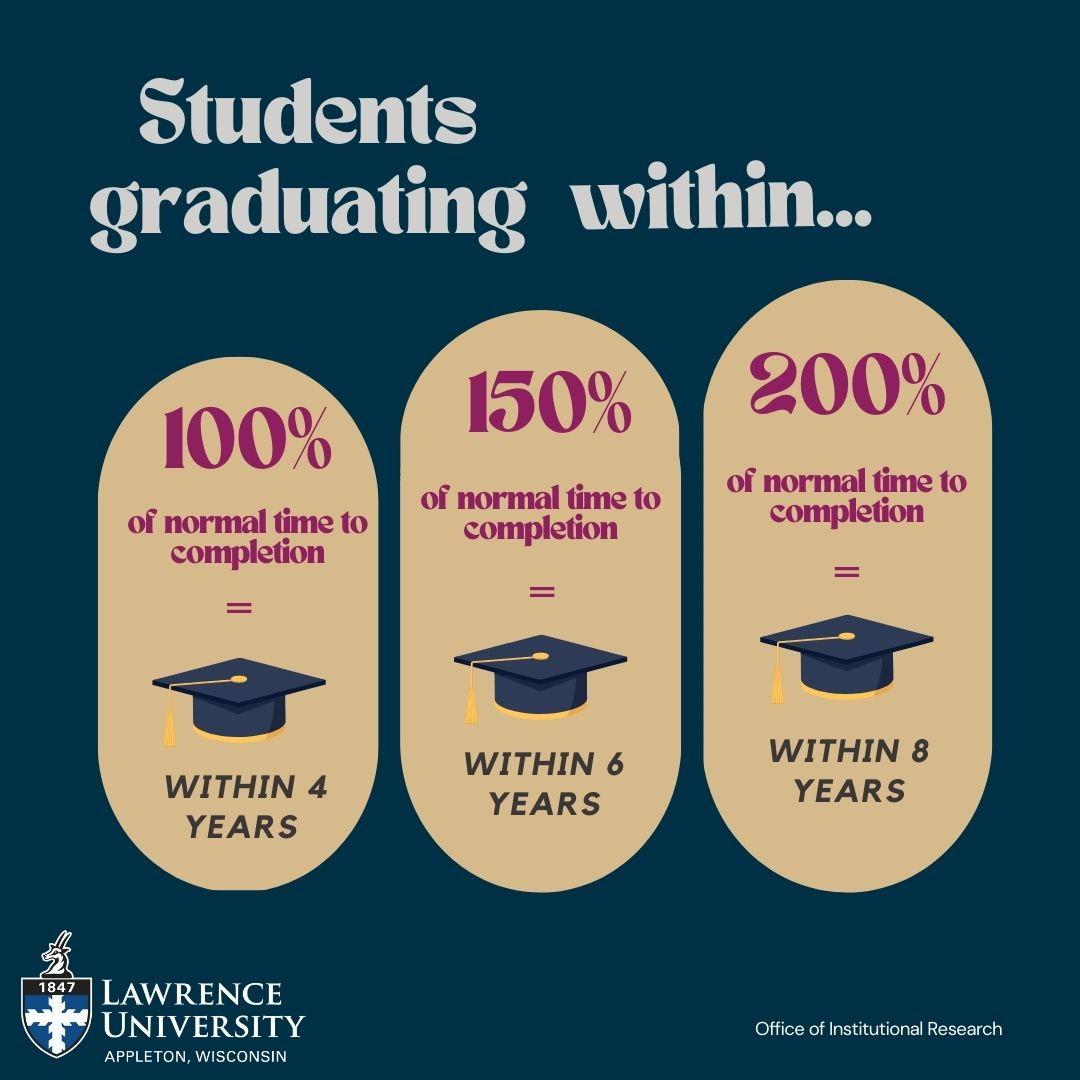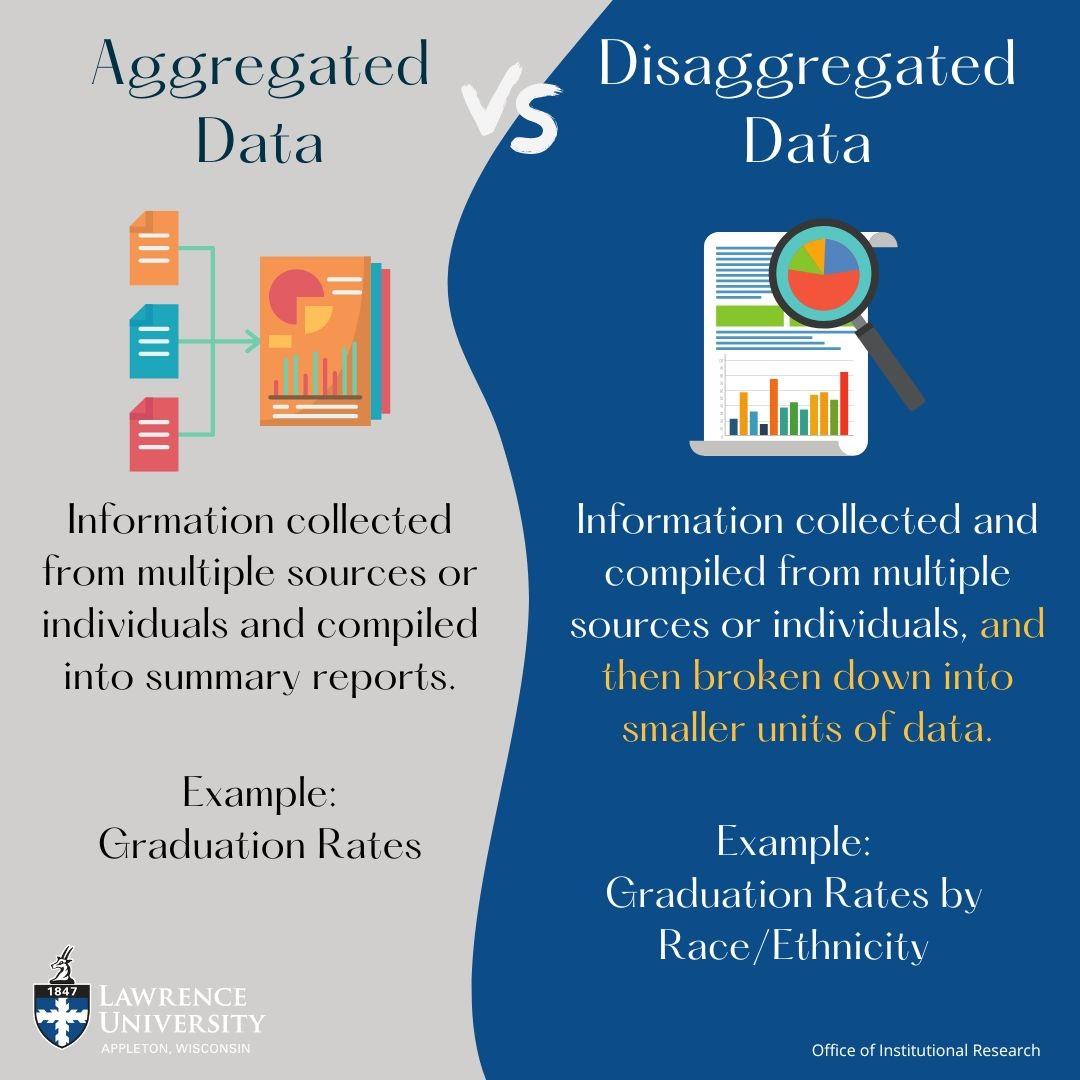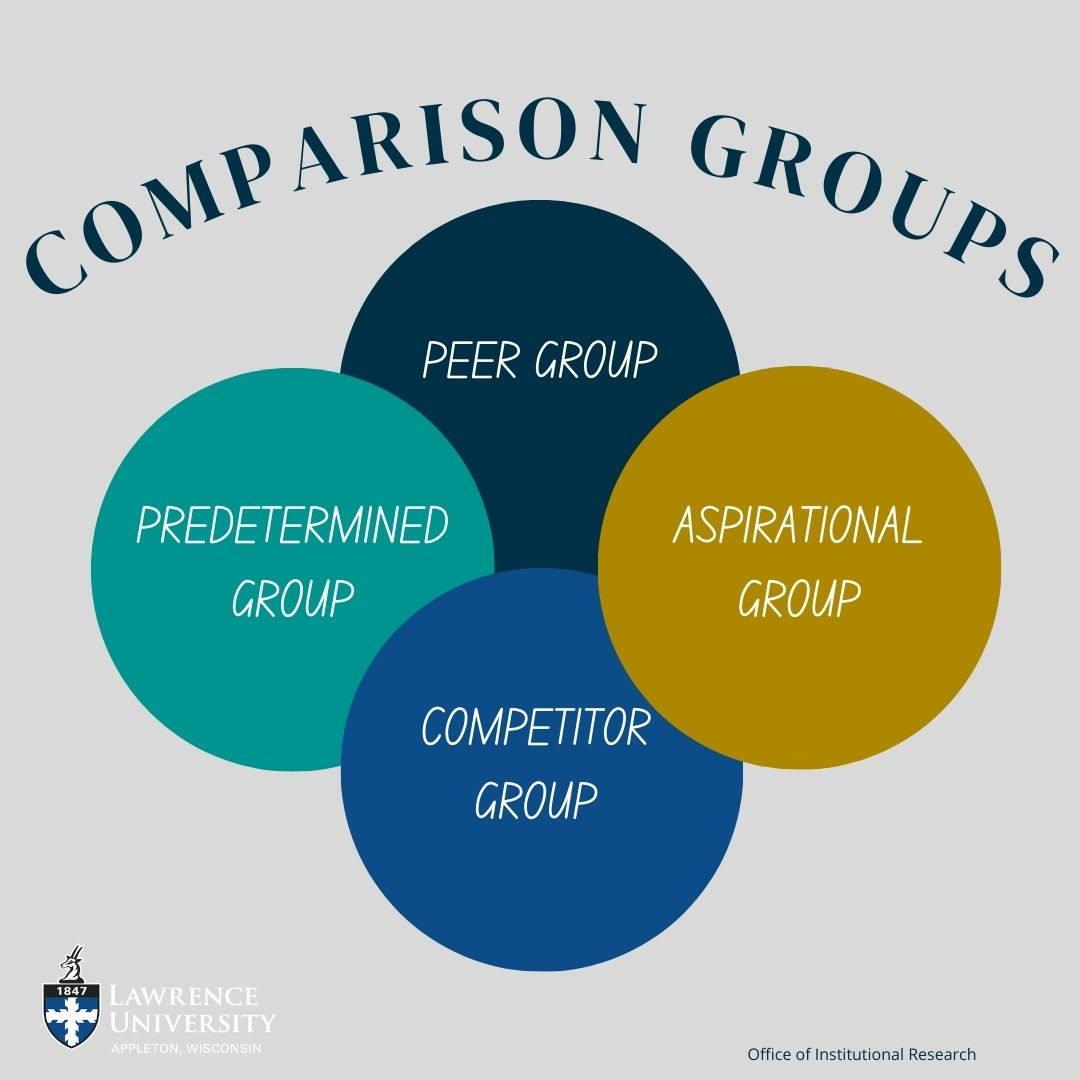Most of our institutional data comes from a central database, Banner. Another rich source of data, which can give insight into student experience, are surveys, focus groups, and interviews (conducted by external evaluators for grants). Visit our Sharing Data page to discover the sources of our data.
Definitions
Definitions provide context to data. Our Fact Book contains data about cohorts. A cohort is a specific group of degree-seeking students established for tracking purposes. For example, first-time students who enroll in fall 2022 are categorized as the fall 2022 cohort. We track the journey of a cohort from its initial fall to learn how many return the second, third, or fourth fall (retention rates) and how many complete a degree within four, five, six, or eight years (graduation rates).
Both retention and graduation rates are expressed as percentages. A retention rate measures the portion of degree-seeking students who persist in their educational program at an institution. For Lawrence purposes, rates are calculated from the initial fall, and the term “retention rate” is used interchangeably with the term “persistence.” Note that retention rates do not imply constant enrollment. For example, a student not returning 2nd fall may return 3rd fall. A graduation rate measures the portion of degree-seeking students who complete their educational program at an institution. Completers within 150% are students who completed their degree program within 150% of the normal (or expected) time to completion, and for federal reporting purposes that is six years for four-year baccalaureate institutions, like Lawrence.

Aggregated data are collected from multiple sources and compiled into summary reports (e.g., Graduation Rates). Disaggregated data are collected from multiple sources and broken down into smaller units of data (e.g., Graduation Rates by Race/Ethnicity). Federal laws [Family Educational Rights and Privacy Act (FERPA) and Office for Human Research Protections (OHRP)] and professional standards regulate the extent to which we disaggregate data and the ways in which its disseminated.

Benchmarking
Benchmarking is the comparison of one business' or organization's internal processes to that of others. Comparisons are typically made with similar organizations or with organizations considered to be examples of best practices. The process of benchmarking involves gathering and comparing quantitative data (i.e., measures or key performance indicators).

The term comparison group is used in higher education to reference a set of schools used to benchmark a specific school relative to other institutions. It is commonly used to assess whether a school is making progress toward strategic goal(s), determine if a school is improving on a set of performance indicators, and inform decision making. There are different types of comparison groups that can be created for the purposes of benchmarking.
The most common type of comparison group is called a peer group. Institutions that comprise a peer group are similar, but not identical to, the reference institution, in this case, Lawrence with regards to role, scope, and mission. Traditionally, schools in the peer group will have similar number of students, faculty, and staff, comparable educational missions and degree programs, and similar financial and capital resources.
The second reference type is the aspirational group. This group is comprised of institutions that have attributes or characteristics that are dissimilar to the home institution, but yet aspirational to attain. This could include characteristics such as higher retention and graduation rates, endowment, student/faculty ratio, and alumni giving rates. Some school use popular ranking systems, such as those developed by US News and World Report, to form an aspirational group.
A third type of reference group is called the competitor group which is comprised of institutions that compete with the home institution for some resource. For example, an institution could be considered part of a competitor group if a student goes to that school even if s/he has been accepted by the home institution. Similarly, a competitor school could be one that a potential faculty member selects after being offered a position by the home institution. Competitors may or may not be similar in role and scope.
The last major type of reference group is called a predetermined group. Predetermined groups are institutions that share a common characteristic such as being faith-based or sharing a natural geographic location. Two examples of predetermined groups for Lawrence would be the Associated Colleges of the Midwest (ACM) and our Carnegie Classification. The comparison groups used by Lawrence in the past have actually been a combination of all four types of groups.